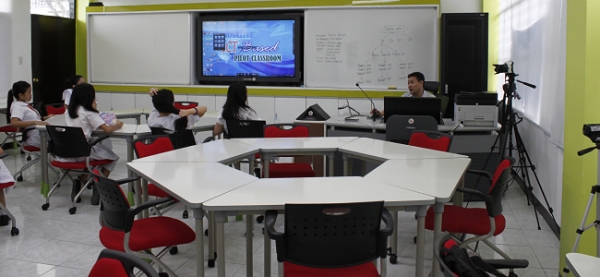"Organising a classroom isn’t arduous; instead, by adopting more efficient processes, it helps free up time."
Perhaps one of the most important benefits, whether the plan is basic or a highly detailed blueprint, is that it will help save time; a precious commodity for anyone in the teaching profession.
Every teacher should have a seating plan in place to help create a successful, thriving classroom, and producing one doesn’t have to be hard work.
Seating to succeed
Use Word, Excel or an online system to create a seating plan, and remember, whichever the chosen method, make one for every class! A quick reference sheet or system reminds teachers of the names of the students, and allows groups to be managed more effectively, while colour coding really helps break the information into smaller sections, which makes it easier to follow.
Once the room shape is designed, it’s then time to organise the seating. Online systems facilitate experimentation with different layouts and provide the ability to connect to the data in a school’s MIS.
Keeping the information as up-to-date as possible is essential for effective classroom management, and also ensures teachers are more prepared when being observed, for instance during an Ofsted inspection. Organising a classroom isn’t arduous; instead, by adopting more efficient processes, it helps free up time. Here are some top tips to help achieve a fresh, new seating plan:
- Mix it up: Ensure a mix of gender, skills and ability. For instance, keeping a healthy mix of enthusiastic students with the less engaged encourages students to support each other, and creates a more balanced classroom. Keep in mind those friendships that may disrupt the class, and, of course, the students whose behaviour could be a challenge, and ensure they are not clustered in one area.
- The finer detail: If possible, include additional student information alongside student profile photos such as Pupil Premium, SEN, EAL, current / target grades, and even medical conditions. Also, make sure the plan is marked with the key data needed on a day-to-day basis; the more data shown on the plan, the more informed teachers will be.
- Support positive working: Although it’s good to mix up the seating arrangements by ability, it’s also beneficial to encourage those groups of students that work well with each other to support positive working.
- Keep control: By improving classroom management, teachers are able to assume greater control. For instance, keep students who display challenging behaviour near the front of the classroom, and ideally sit them away from each other. A good seating plan can literally turn the tables on challenging behaviour.
- Share the plan: Try to project the seating plan on the board at the start of the lesson for all students to view; if the plan is clearly on display, it’s easier for everyone to follow, students and teachers alike.
- Trial new approaches: Different seating arrangements can change the dynamics of the classroom, so as well as changing who sits where, think about the actual layout of the desks; experiment and refresh with new layouts when possible.
- Keep up-to-date: Keep key student data accurate, complete and up-to-date to assist with classroom management.
- Information sharing: Covering a class or sharing a lesson is so much easier if a seating plan exists for that room, if all the teachers in a school create one, then no-one is left in the dark when covering a class. So make plans clear to enable colleagues across the school to use them if needed.
Remember, seating plans are an essential part of classroom management, and if done well, provide greater control and information, which ultimately helps teachers and students get the most out of the classroom.
How do you sort your classroom’s seating plan? Let us know in the comments.


















